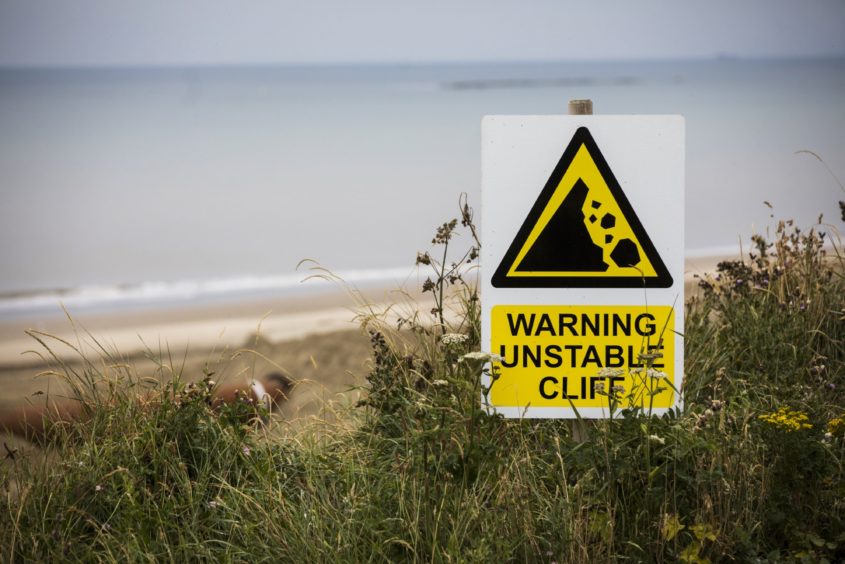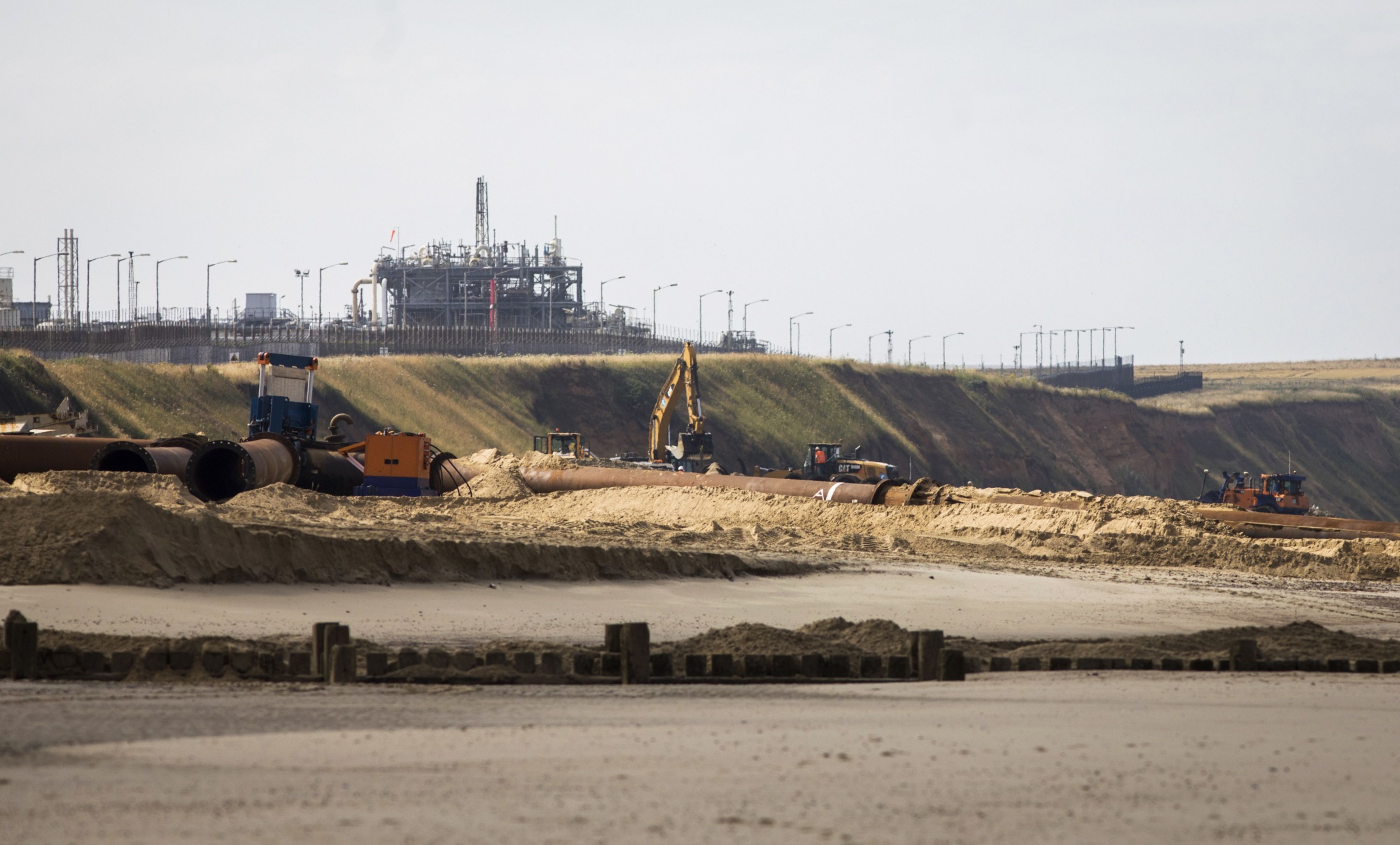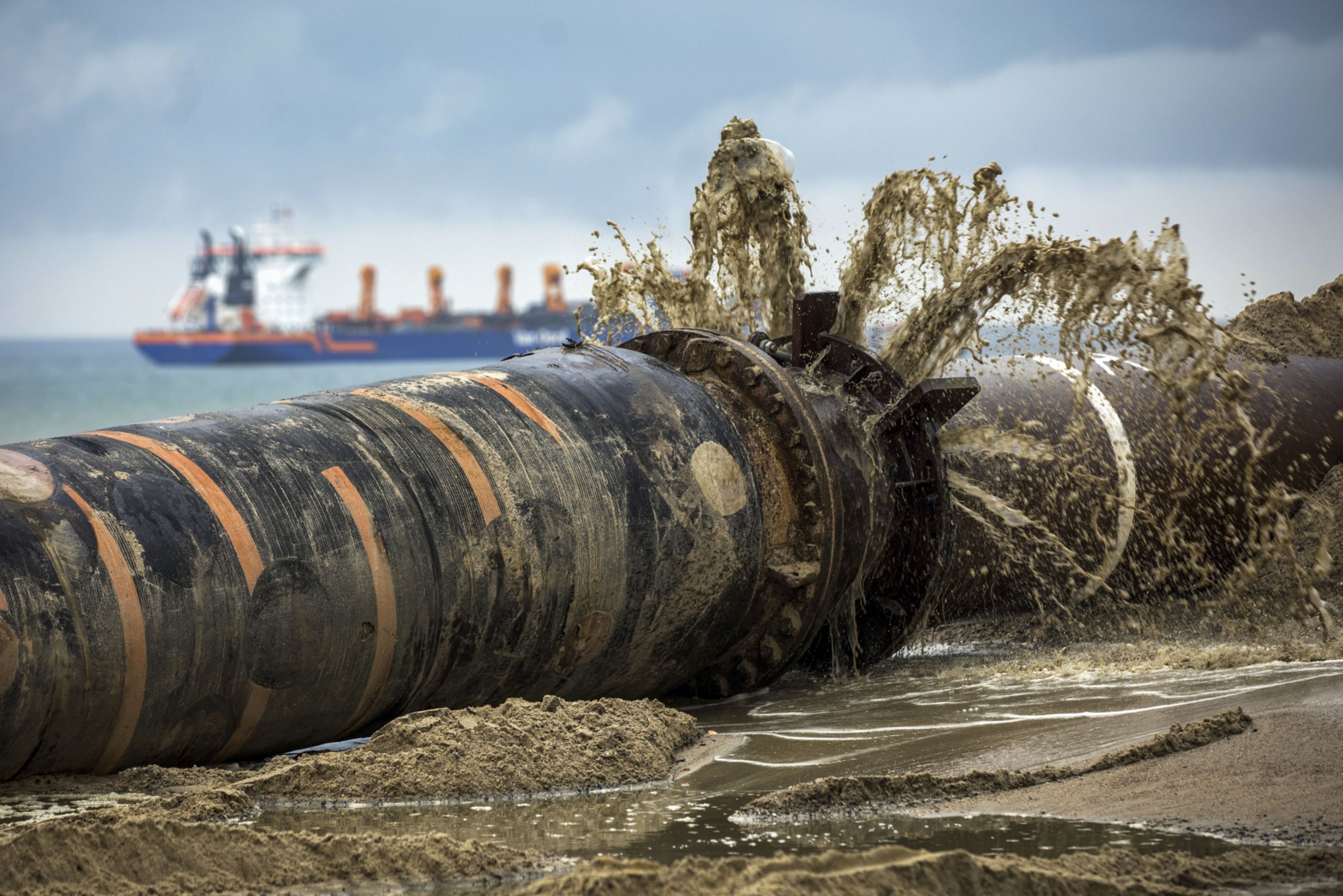
On the evening of Dec. 5, 2013, the U.K. east coast was battered by the worst storm surge in 60 years as the North Sea rose more than 2 meters (6.6 feet) above normal.
The massive flow of water beat sea defenses in the county of Norfolk, one of the worst hit areas, and traveled down roads to flood almost 200 homes and businesses. Not only did it force some residents in the villages of Bacton and Walcott to flee their properties — it also took a big bite out of the land that protected a very important part of Britain’s energy infrastructure from falling into the sea.
As the storm raged and the waves hit, more and more of the land beneath the Bacton natural gas terminal disappeared. Over 48 hours, the erosion was so bad that 10 meters of cliff vanished, leaving just 15 meters of land between the facility and the sea.
After another five years of deterioration and damage to the coast line, a search for the optimal protection settled on sand. And lots of it. Options from concrete to rocks were also explored. Work began this month and the plan is to pump 1.8 million cubic meters of sand, enough to fill one and a half London’s Wembley Stadiums, onto a six-kilometer stretch between the Bacton terminal and Walcott. About half of it will be in front of the terminal.
Out at sea, the 227-meter long Ham 318, a vessel deployed by Van Oord NV, is making three to four trips a day to Bacton. The ship, a trailing suction hopper dredger, takes sand from offshore areas near Great Yarmouth, south along the coast, without leaving any holes in the seabed. Every load brings ashore about 20,000 cubic meters of material. When the vessel is in position about a kilometer out at sea, it connects to a floating pipe, which is linked to a second conduit onshore. A mixture of sand and water is pumped onto the beach, as shown in the photo above.
“You would see on normal high tide the water would actually lap against the cliffs, and that is not going to happen anymore now,” said Jaap Flikweert, flood and coastal management adviser at Royal HaskoningDHV, the Dutch company that designed the rescue project. It has been named sandscaping, the first of the kind in the U.K., and will give the terminal from 1968 another 15 to 20 years of protection.
Six-meter wide bulldozers then move the sand into place. At their best, the machines build as much as 240 meters of new beach per day. Initially, after the works are completed — by July 27 for the terminal section and by Aug. 15 for the section around the villages of Bacton and Walcott — the erosion may actually speed up. But as the coarser grains cover up the finer sand, the process will slow down. Over time, nature will move the sediment along the coast. How the beach respond to storms will be monitored carefully.
The project required a lot of computer modelling on how the beach will behave. Not any sand would do and the engineers had to find a suitable composition and make sure the material wasn’t taken from too far away as that would have increased costs already running at as much as 19 million pounds ($24 million), Flikweert said. The protection is expected to last 15 to 20 years. While it could have been made to last longer, that duration gives operators from Royal Dutch Shell Plc to National Grid Plc and Perenco U.K. Ltd. the flexibility to decide later on whether further investment will be needed, Flikweert said.
Bacton, which consists of six separate import terminals, is central to the U.K.’s energy supply because it is the only place where pipelines from Netherlands and Belgium connect to the British grid. The hub also draws in supplies from a number of fields in the North Sea. Imports from the continent are only becoming more important, since flows from the North Sea fields are declining and Centrica Plc shut the nation’s biggest gas storage site two summers ago.
Erosion has been a problem in the area for centuries. A church in a village about eight miles away fell into the sea about 770 years ago, as did its replacement in the late 19th century. The cliffs of northern Norfolk are made up of soft sediments. When eroded by waves, those are released into the water and transported along the coast like a “river of sediment.”
Without the protection, some 200 homes in the two villages could be lost within five to 10 years. Another storm in January 2017 left a number of properties flooded, he said.
And what will happen to the Bacton terminal in two decades when the current enforcement work has run its course? As Britain is seeking to become carbon-neutral by 2050, the importance of natural gas will naturally decline. Already this year, the U.K. will generate more energy from low-carbon sources than from fossil fuels for the first time since the Industrial Revolution.
“I am hoping that within 15 to 20 years we will have managed to change to more environmentally friendly energy consumption, or generation, and we will be able to use more renewables,” said Sarah Butikofer, North Norfolk District Council’s Leader. With regards to the terminal, “for now we have to protect it, it is a nationally important infrastructure, we don’t have any choice in that.’’
Recommended for you


